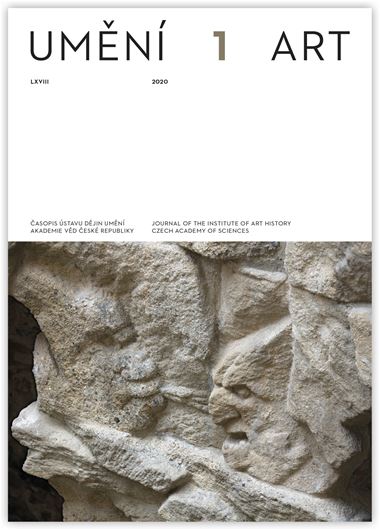Kateřina Adamcová
A Scenographic Concept and an Artistic Joke: Two Aspects of the Sculptural Decorations in the Garden of Troja Chateau
Recent restoration work carried out on two sculptural stone fountains on the upper terrace of the garden of Troja Palace and on the grand staircase on the palace’s southern façade revealed some possible and previously unpursued ways of interpreting these works. The initial impulse for a new interpretation came from relief elements that were newly uncovered after having long been hidden beneath layers of dirt and biocorrosion. A deeper understanding of the overall idea behind the staircase and two fountains and the close connection between them was attained through an analysis of their shared scenographic concept, which is represented in the works as a form of artistic play, where different layers of meaning are gradually revealed to the viewer. The uncovering of these motifs shifts the meaning of the individual motifs on the staircase and fountains and transforms the overall concept of the staircase, which alludes to the final stage in the battle between the Olympians and the Giants. The artistic play that the staircase and the fountains equally engage in with viewers manifests itself not only in the way we are supposed to understand the fountains as sections of Tartarus, but also in how some elements and motifs can only be discovered gradually. This is especially true in the case of the faces of the creatures that are a part of Tartarus that seem to have become embedded in the stone. Many of these motifs are intended to strike fear in the viewer, but they have also been deliberately made to look comical and exaggerated. At one and the same moment they evoke in the viewer both a sense of fear and laughter, and this naturally brings us again to the question of what is the meaning of these little jokes and even of the work as a whole. The extent of the wit and humour that we find on the fountains and staircase is such that we must assume that this was a concept that was based on the client’s wishes. Given that we also find on the fountains humorous elements that are ironically self-reflective in nature, we must also attribute significant responsibility for their visual wit to the artist behind the work and his colleagues.
Adamcová Kateřina: Katerina.Adamcova@ff.cuni.cz
Full-text in the Digital Library of the Czech Academy of Sciences:
https://kramerius.lib.cas.cz/uuid/uuid:a6bd7e0e-3944-48eb-b035-93868ca045d2
< back

